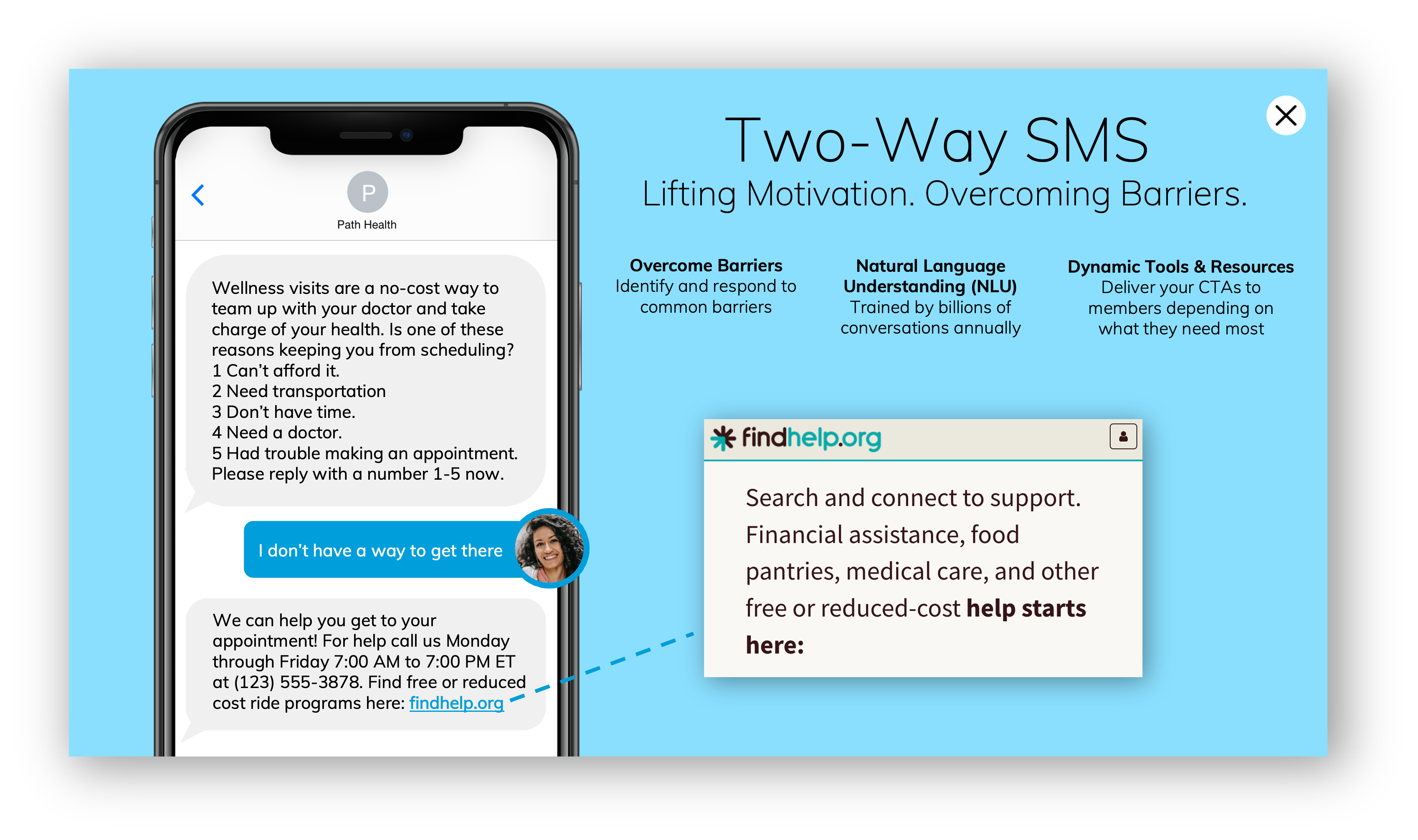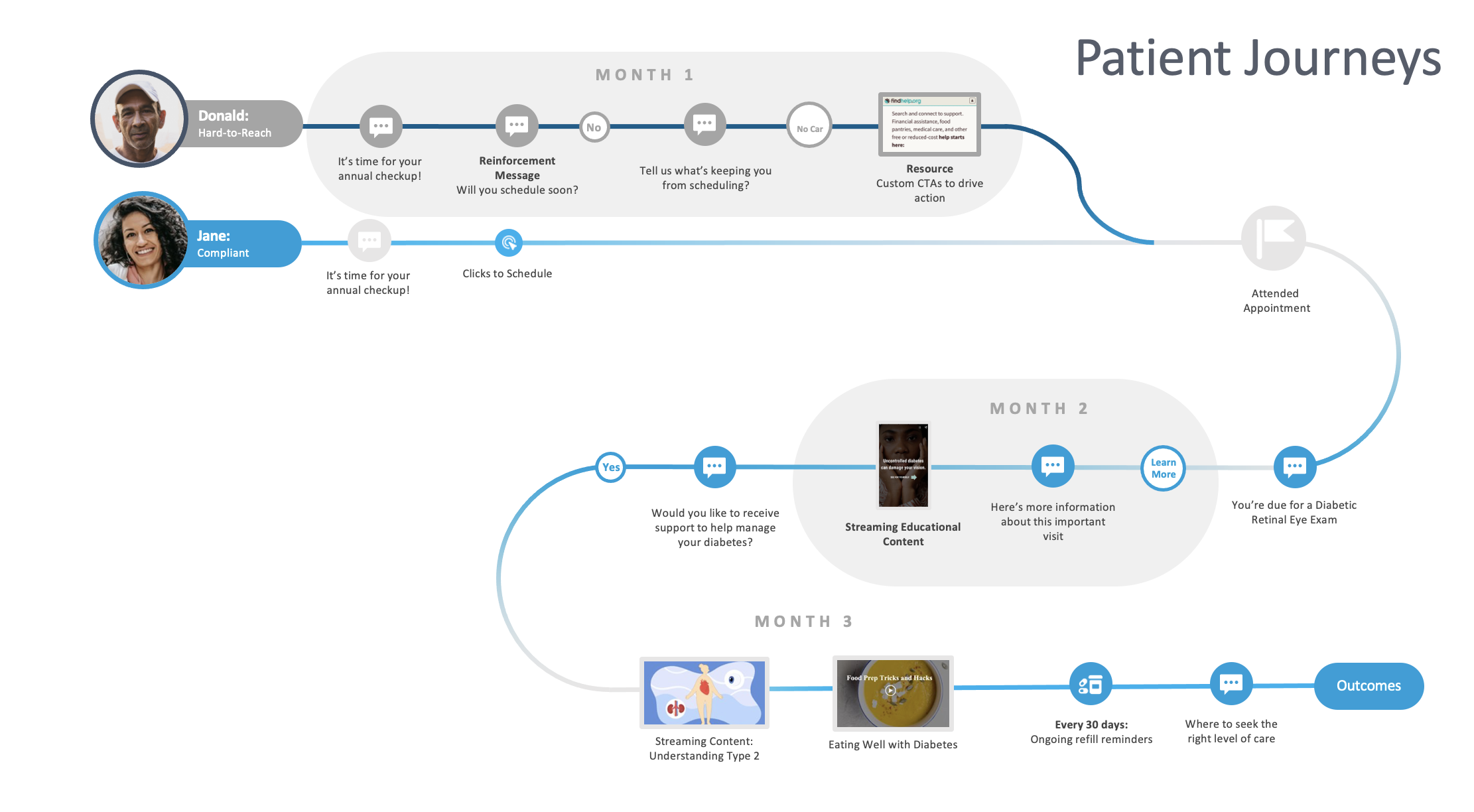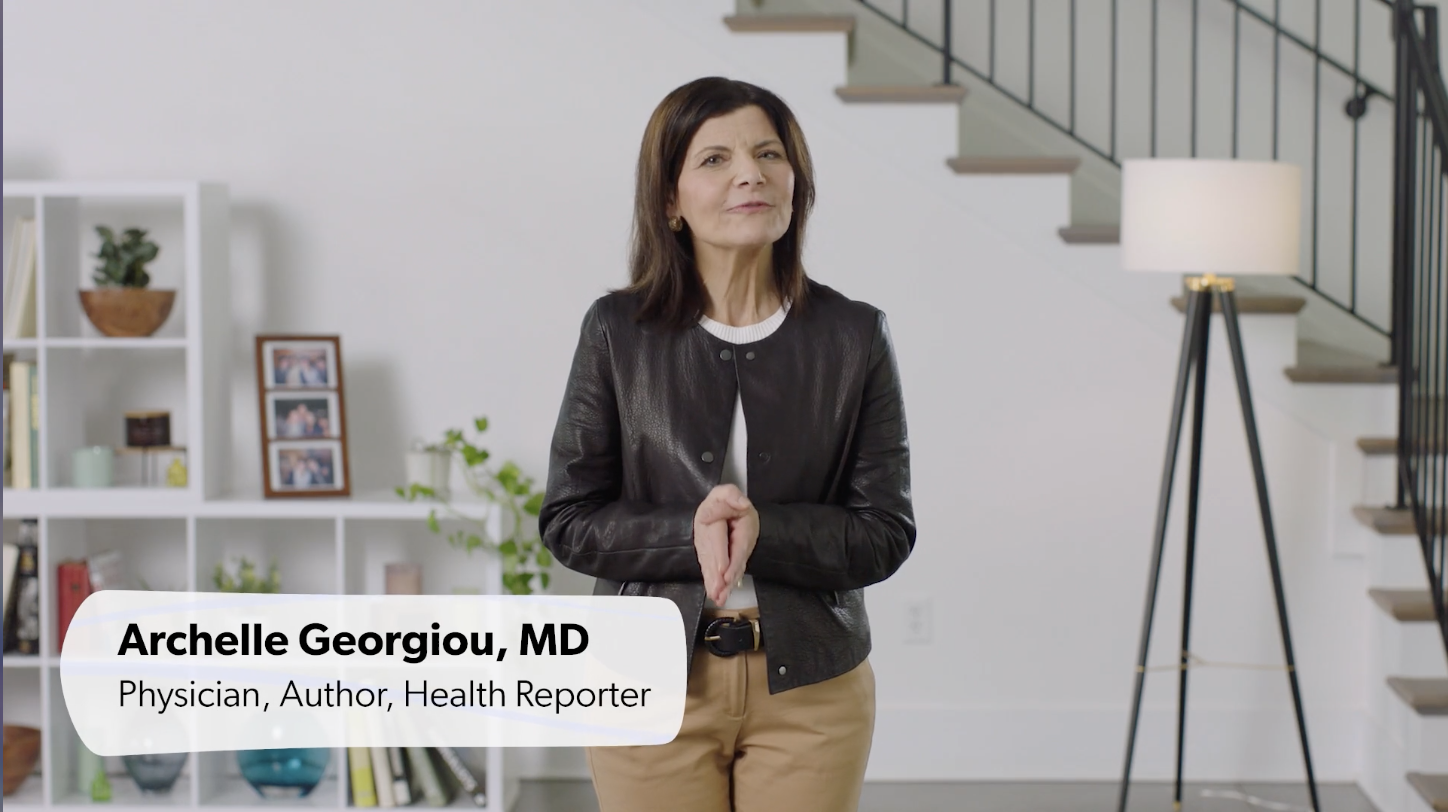Why The Annual Wellness Visit is So Important
The Annual Wellness Visit (AWV) is an incredibly effective tool for consumer health management and is key to keeping people healthy now and in the future. This valuable time spent between provider and patient gives space to check in on progress, discuss health issues, and create a care plan–not to mention it allows for the opportunity to order conduct needed screenings and preventive care, making it an easy way to close multiple gaps in care at once.
Research has shown that establishing a stronger relationship between provider and patient can positively impact health. There are also multiple indirect benefits to plans, providers, and patients, such as reduced network leakage and education on proper ER and urgent care use.
Annual Well Visit Statistics: Underutilized, Underestimated
Unfortunately, AWVs are surprisingly underutilized. Only 25% of Medicare Advantage beneficiaries receive an AWV (even though 45% of all Medicare beneficiaries have four or more chronic conditions). Many hard-to-reach populations within Medicaid and Medicare are not taking the time to schedule and attend their AWV, and many patients do not understand the importance of this visit at all.
But it is important–to both the patient and healthcare organizations. Beyond the benefit of catching and controlling health issues, the AWV is a critical component of Hierarchical Condition Category (HCC) recapturing.
In fact, an 85% AWV completion rate can result in an 80% or higher HCC recapture rate. This can mean a significant power over reimbursement dollars for plans and providers.
Example Scenario
Our 75-year-old male patient can have two different outcomes determined by his AWV. With proper coding of his full health status in the second scenario, you see a significant increase in reimbursement–over $5,000 annually for this one patient. If you multiply that by over 500 patients, you will see an increase of $2.5 million annually (or a loss if you neglect to code correctly).
But what happens if this patient never schedules his visit or if his visit isn’t coded correctly? You’re leaving good money on the table.
| Patient Demographics | HCC (Hierarchical Condition Category) | Risk Adjustment Factor |
|---|---|---|
| 75-Year-Old Male | 0.428 | |
| E11.41 Type 2 Diabetes mellitus w/diabetic mono neuropathy | HCC18 Diabetes w/chronic complications | 0.625 |
| Total RAF | 1.053 | |
| Payment Per Month | $684.45 | |
| Payment Per Year | $8,213.4 |
Example scenario: If this patient never schedules his visit or if his visit isn’t coded correctly. Good money is left on the table.
| Patient Demographics | HCC (Hierarchical Condition Category) | Risk Adjustment Factor |
|---|---|---|
| 75-Year-Old Male | 0.428 | |
| E11.41 Type 2 Diabetes mellitus w/diabetic mono neuropathy | HCC18 Diabetes w/chronic complications | 0.625 |
| K50.00 Crohn’s disease of small intestine w/o complications | HCC35 Inflammatory bowel disease | 0.279 |
| M05.60 Rheumatoid arthritis of unspecified site w/ involvement of other organs and systems | HCC40 Rheumatoid arthritis and inflammatory connective tissue disease | 0.423 |
| Total RAF | 1.755 | |
| Payment Per Month | $1,140.75 | |
| Payment Per Year | $13,689 |
Example scenario: With proper coding of this patient’s full health status, you see a significant increase in reimbursement.
Using Technology to Unleash the Power of Annual Wellness Visits
Suppose your goal is to increase the number of members or patients you have going in for their AWV and to recapture their HCC codes properly. In that case, it’s critical to have effective outreach to educate, motivate, and drive behavior change in those hardest to reach–a challenging but attainable goal.
Behavioral Science
One of the most important tools available to increase motivation and inspire behavior change is your approach to the conversation. With behavioral science, we take what we know about human behavior and tendencies and use that knowledge to not only predict the response to our outreach but to sway people toward one action or another.
When we reach out to members and patients regarding AWVs, saying, “Hi, Susie. You’re due for your no-cost annual wellness visit,” has a measurable impact on response.
In this message, we employ the Endowment Effect, a behavioral science principle that assigns higher value to objects and tasks when consumers feel a sense of ownership and personalization. By telling Susie it’s her no-cost visit, we are making it more likely she will take action.
AI Technology
Let’s go beyond the planned messages, though. Not everything can be scripted when you start a real conversation with a real person. With Conversational AI and Natural Language Understanding (NLU), plans and providers can communicate with patients in a personalized, conversational, and real way.
Instead of one-way interactions where the healthcare organization is talking at the patient, AI and NLU broaden out your abilities into a fully-fledged two-way conversation where the patient can freely respond the way they would naturally speak, and the system can understand and carry the conversation naturally in an almost human-like manner.
If a plan is reaching out to encourage an AWV and the member says, “I don’t have a doctor,” NLU can easily recognize that response and follow up with a list of in-network doctors near the patient.
Health Equity
This technology and ability for two-way interaction opens the experience to so many more possibilities–an important one being barrier analysis.
With the ability of NLU to interpret barriers to access (such as not having access to a doctor or not having transportation to the appointment) and uncover possible social determinants of health (SDoH), the healthcare organization gains more information about the circumstances of each individual.
With AI and NLU capabilities, the healthcare organization can respond accordingly with resources, education, and support to break down the barriers tied to inequity and provide a more accessible healthcare experience.

Instructional Strategy
One barrier to health equity that we often encounter is the issue of health literacy. Many health consumers need help understanding what an AWV consists of, why it’s important, or how to find a doctor to obtain one. This is where education becomes an essential part of any outreach strategy.
The video below features Dr. Archelle Georgiou, a leading physician, healthcare executive, and author, explaining why annual wellness visits are critical to preventing chronic disease and keeping a person healthy.
Including this short three-minute video can answer many questions the patient may not know they have, raise their health literacy, and increase their motivation to schedule.
Putting it All Together
These individual strategies ultimately come together to form one highly effective solution aimed at increasing the number of members and patients who schedule and attend their AWV.
mPulse’s Annual Wellness Visit solution incorporates these and can effectively drive behavior change, even among unengaged and hard-to-reach populations. With AI technology to uncover and address barriers, an omnichannel outreach method to ensure you’re reaching every member possible (no matter how hard to reach), and both behavioral science and streaming health content to inspire self-efficacy and build knowledge, healthcare organizations deploying this solution have seen up to a 61% visit rate for targeted members living near in-network clients.

And though this can have an impressive impact on the bottom line of healthcare organizations, it also significantly and directly impacts people’s lives and health.
The ability to catch early signs of disease and the chance to educate someone about their health and lifestyle makes the AWV one of the more powerful tools in the healthcare industry’s arsenal–so let’s make sure we are using it to its full potential.
Join 200+ leading healthcare organizations leveraging our cutting-edge solutions to improve Annual Well Visits attendance and ensure optimal health engagement through our digital health solutions. Explore how mPulse can transform AWV experiences, drive behavior change, and elevate health outcomes for your members.







